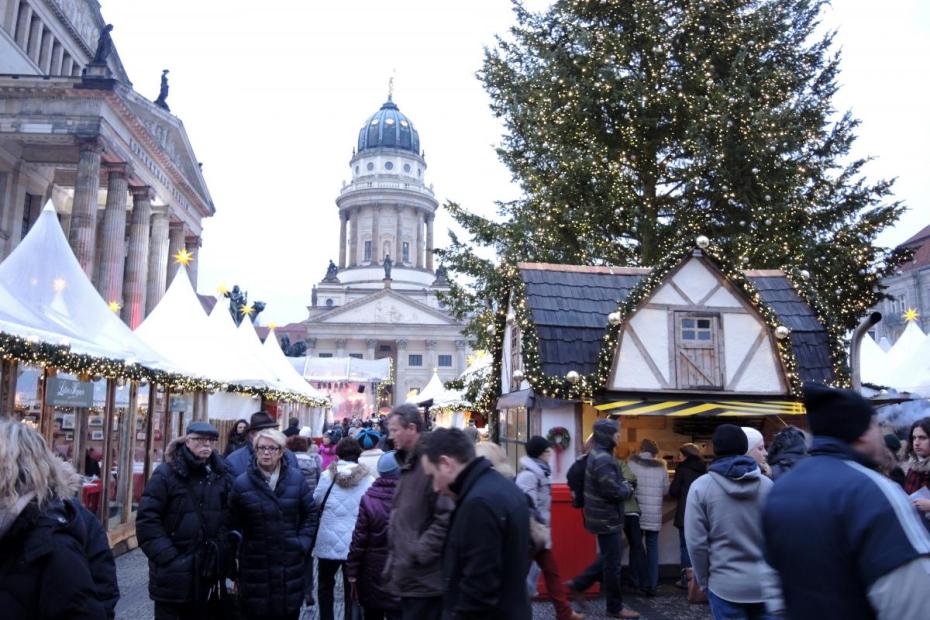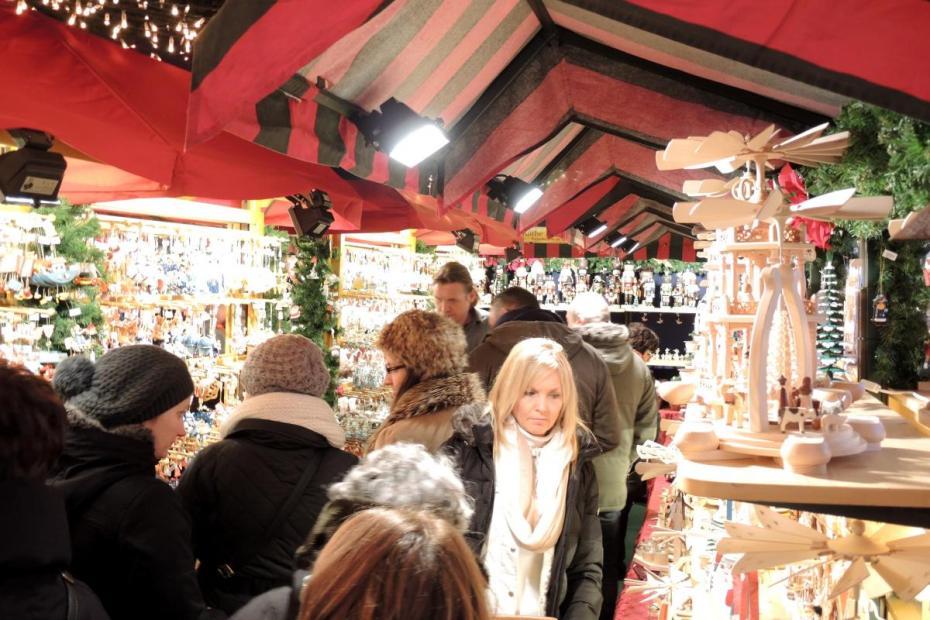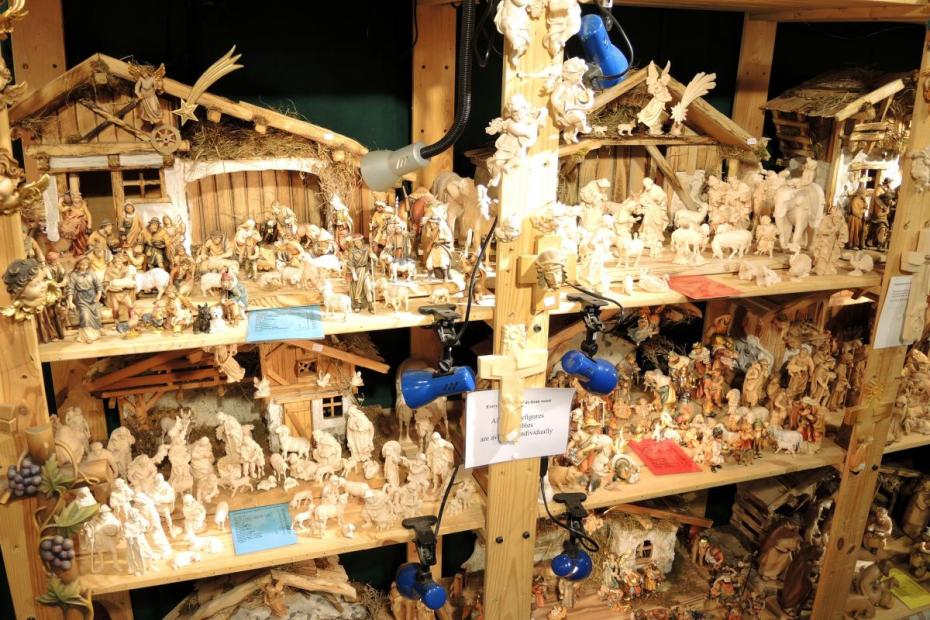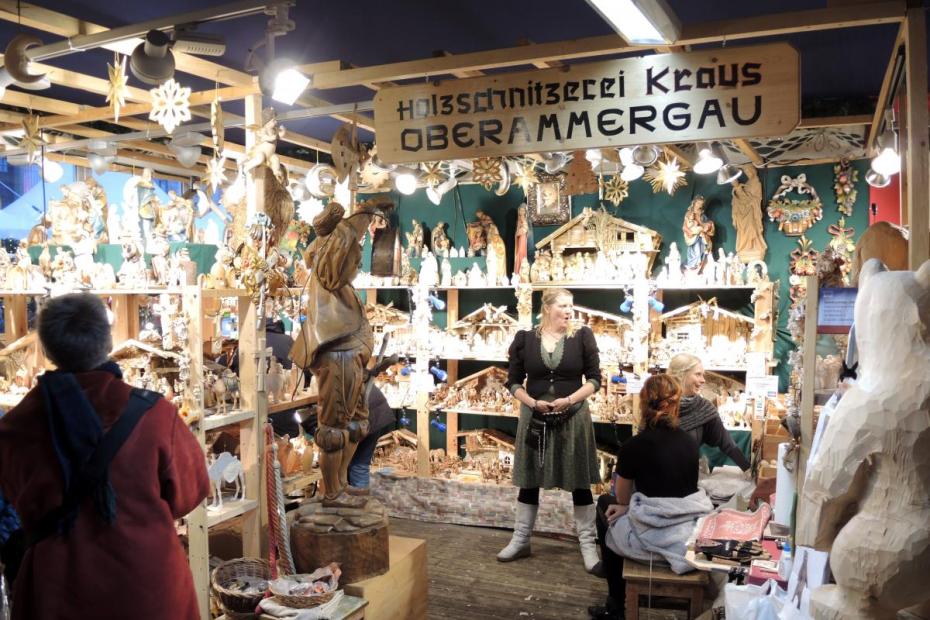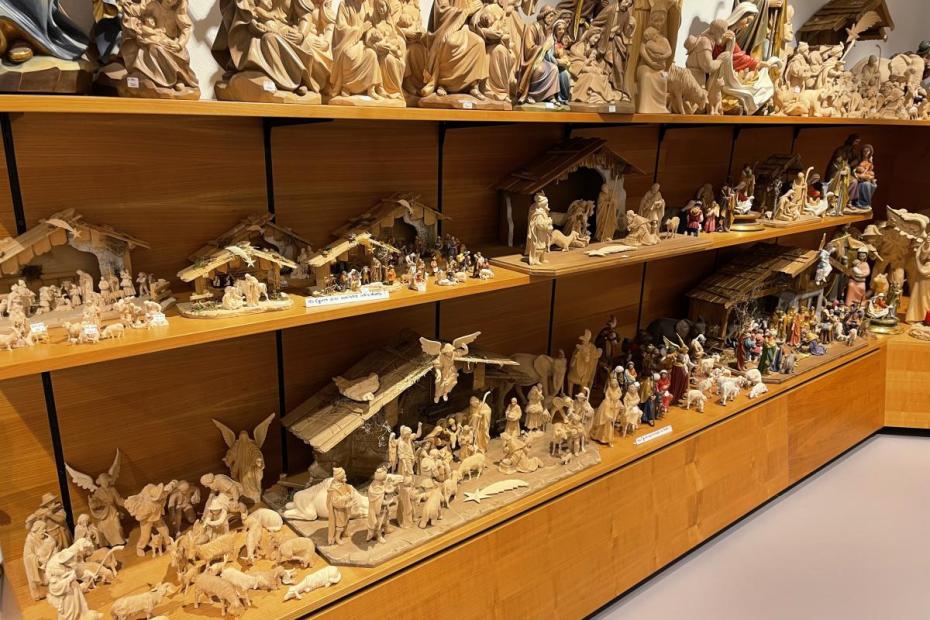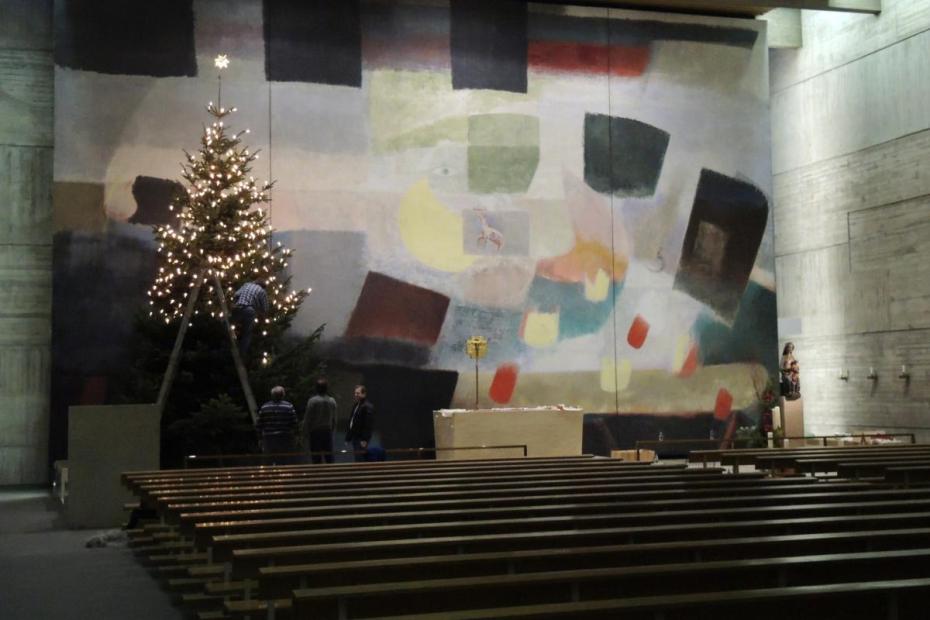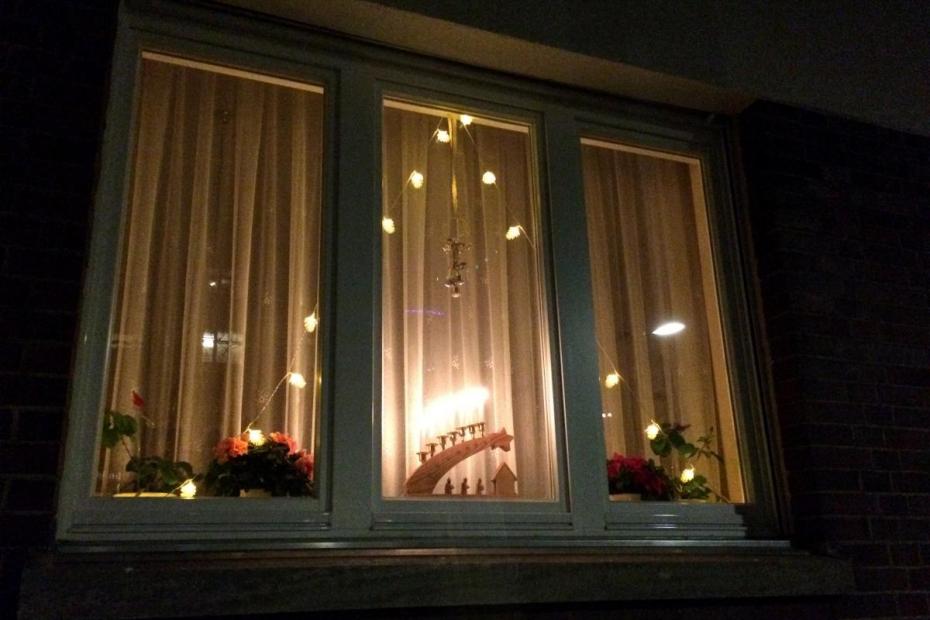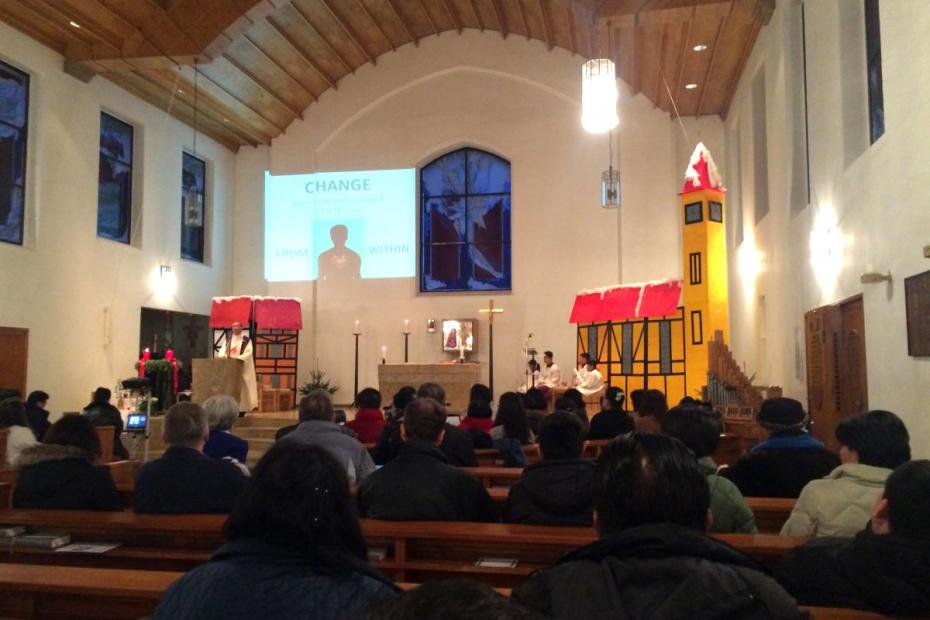Germany, particularly in the Catholic southern and western regions, is home to a great many Christmas traditions, beginning with the arrival of the bishop-saint, St. Nicholas, on December 5, the eve of his feast day. Christmas trees, part of Christmas celebrations in more and more places around the world, originated in Germany. Weihnachtsmarkt, Christmas craft fairs also date back centuries in Germany, originally in southern cities like Munich and Nuremberg. Lebkuchen (a sweet cake with dried fruit) and gingerbread are among the German specialties served during Advent and Christmas. Christmas goose is the traditional meal.
Prussian Berlin kept a bit more distance from many forms of Christmas celebrations, but today, throughout December, holiday-themed lights and decorations play a very visible role there. For a city that is arguably post-Christian, Christmas is a major cultural event. Evergreen boughs, ribbons, Christmas trees, Weihnachtsmarkt and the lights that decorate apartment windows and shops throughout the city make it hard to miss what the season is, even if they don’t often convey a Christian meaning behind it. Stores close early on Christmas Eve, and Dec. 25 and 26 are holidays.
Berlin’s Weihnachtsmärkte, in the heart of the city at Stadtmitte, for example, conveys a sense of small town conviviality, and a respite (though still a consumerist one) from the malls and offices that surround it. It has dozens of booths, stands selling glühwein (hot mulled wine) and bratwurst, and a huge Christmas tree and many green and red holiday decorations. Only one shop, featuring crèches and related woodcarvings from Oberammergau, makes reference to Christianity. Most booths feature Christmas-themed foods, “holiday” ornaments, and gifts. Tucked near an enormous Christmas tree is a crèche with life-size figures, but it too is dwarfed by the stage from which 1950s American Christmas songs are broadcast.
Berliners spoke about gifts, conviviality, and hospitality when they described Christmas, but interestingly didn’t make even superficial reference to family, in contrast to the United States, where people often say that the holiday season is about "children" and "family."
Catholics saw this as one of the few times when a Christian feast came into public attention, but also acknowledged that many Berliners had only a general idea what the origins of the feast were. Still, they noted, many Berliners would be clueless that Easter was an important feast, so they were at least pleased that they knew of Christmas as a celebration of the birth of Jesus.
Christmas eve Masses are said to be always packed, drawing out the many Catholics who are only holiday attendees. The stadium draws crowds for a traditional hymn-singing event. Churches often try to use the broader cultural energy around the holiday to attract attention to the Nativity story itself. St. Martin’s, a Catholic parish on the far Eastern edge of Berlin, sponsors a special Christmas hymn sing for persons of no faith, to give them a chance to sing traditional hymns that even secular Germans still cherish, and to hear the biblical Christmas story so that they know what it is.
